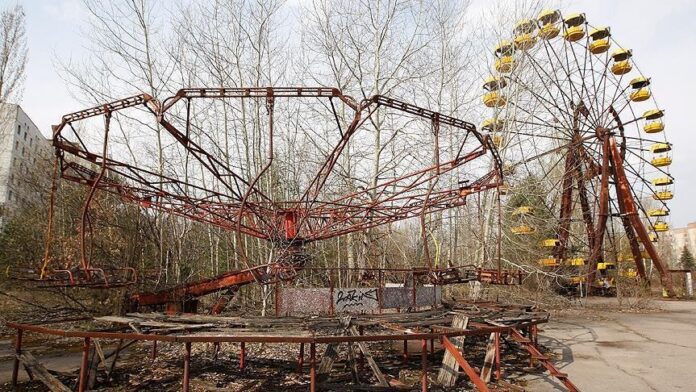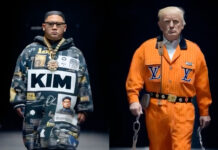Diplomats and MFAs often seek to break their “algorithmic confines”. This is because social media algorithms limit the reach of diplomats’ online content. Tweets published by an Embassy, for example, will only reach the Embassy’s followers or social media followers who have expressed some interest in diplomacy, international relations or bi lateral ties between countries. As such, algorithms prevent diplomats from reaching most social media users.
Over the years, diplomats have adopted different digital tactics to breach “algorithmic confines”. One tactic is using humor in order to obtain virality. Indeed, some humorous tweets, such as the one shown below, trend online and are viewed by hundreds of thousands of social media users. Other times, diplomats will incorporate trending hashtags into their content such as “Covid19” or “Merkel” or “Donbas”. Another tactic includes tagging journalists or even celebrities with the hopes that these will re-tweet or Share diplomats’ content with millions of followers.
Another important tactic is ‘media-jacking’ (for my definition of this term click here). In this tactic, diplomats will leverage a global media event to disseminate their messages and narratives. In these instances, diplomats “piggyback” on important media events that attract attention from social media users. These media events can be quite diverse and range from international sports competitions to singing competitions such as Eurovision, awards ceremonies and international days of remembrance. Even “international beer drinking day” can be used by diplomats to increase their reach.
Last week Ukraine decided to hijack a media event- the 37th International Chernobyl Remembrance Day. This day recalls the Chernobyl nuclear disaster of 1986, the worst civil nuclear accident in history. On April 26, as the world’s media tweeted and posted about the Chernobyl incident and its devastating aftermath, Ukrainian officials, diplomats and institutions also took to twitter in an attempt to link the Chernobyl disaster with the current Russia-Ukrainian War.
The Ukrainian foreign ministry published the tweet below that included a video detailing the events of 1986 while adding three important arguments. First, the video described the Soviet ‘cover-up’ of the Chernobyl disaster and Soviet leaders’ decision to lie to their own citizens and the world. These lies placed the world at risk. The main argument here is simple- Russia has a history of lying and deceiving the international community. Thus, Russia cannot be trusted.
The MFA’s video also links the Chernobyl incident and the war by suggesting that another nuclear accident may happen due to Russia’s decision to fire upon, and occupy, both Chernobyl and another nuclear power plant in Ukraine. Russia is thus depicted as a nuclear threat to Ukraine, Europe and the world. Finally, the video suggests that unlike the rest of the world, Russia has not learned the lessons of the past and is still taking risks when it comes to nuclear facilities.
The video thus associates present day Russia with the legacy of the Soviet Union.
Another video was shared by Ukraine President Zelensky. The President used the Chernobyl incident to make three, different arguments. First, that radiation, like Russia, does not recognize state borders. Here Russia is associated with a deadly substance that moves in stealth and is only detectable once people begin to suffer. By comparing Russia to radiation, the Ukrainian President actually claims that Russia will not stop spreading, violating borders and killing people unless it is beaten by Ukraine.
Second, given the great risk of nuclear accidents, the President called on Russia to stop occupying and attacking nuclear power plants in Ukraine. Here, the President used the Chernobyl incident to draw a contrast between Ukraine and Russia, between responsible states and rogue states, between Ukraine that can be trusted and Russia that cannot. Moreover, Russia emerges from this video as a global threat and not just a threat to Ukraine.
Finally, the President called for compliance with rules that guarantee safety. This is a reminder to social media users that Russia violates international law and norms and while occupying and invading other countries. In other words, the video depicts Russia as a consistent violator of international law and a reckless actor that disregards the conventions put in place to guarantee the safety of all nations and peoples.
Another video shared by a Ukrainian official included documentary footage from the 1986 Chernobyl accident and was accompanied by an especially ominous soundtrack. This video may have been used to suggest that while Russia spreads lies, in the great tradition of the Soviet Union, Ukraine speaks truth, and that Ukraine will continue to uncover other Russian lies and coverups.
By summoning the past to the present, Ukraine may have also been able to reduce the complexity of the Russia-Ukraine War. The current war has escalated into a major geo-political conflict that involves many states and many contrasting interests. Compared to this crisis, the Cold War was a simpler time with a clear dichotomy between East and West and ally and foe. By associating Russia with the Soviet Union Ukraine used a historical template to make the current War more intelligible to digital publics as there is, once again, a clear distinction between ally and foe, aggressor and defender.
Notably, “media-jacking” is predominantly used by activists and civil society groups. For instance, a meeting of world leaders or a global summit that attracts media attention can be used by climate activists to advance their goal and raise awareness of climate change. Yet as Ukraine has shown, this can also be an effective strategy for states. By “hijacking” the Chernobyl incident, Ukraine was able to piggy-back on a trending topic, reach more social media users, refocus attention on the current war with Russia and, most importantly, portray Russia as a historic and contemporary menace to global safety and peace.



 (@MFA_Ukraine)
(@MFA_Ukraine)  , has been looming every day and…
, has been looming every day and…  :
: 









